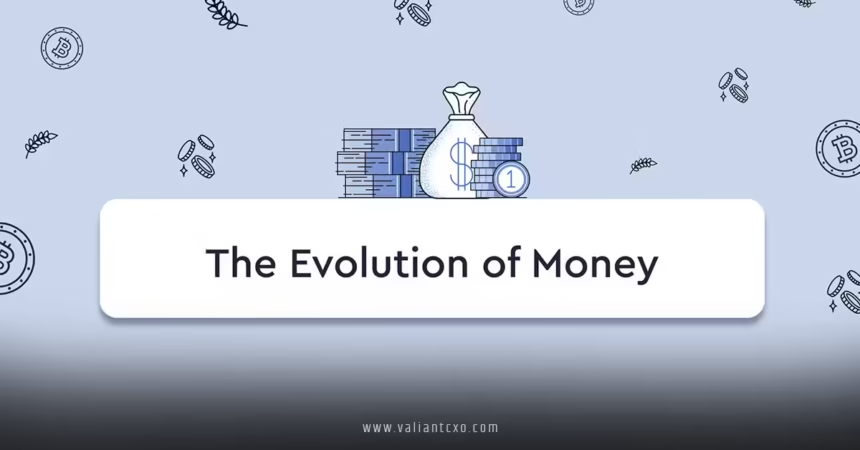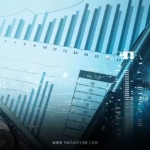The Evolution of Money in the Global Economy has shaped how we trade, save, and dream about wealth. From shiny shells to digital bits, money’s journey is a wild ride through human history. Imagine bartering a goat for a sack of grain—cumbersome, right? That’s where it all began. Over centuries, money transformed from tangible goods to sleek cryptocurrencies, reflecting our changing needs and tech breakthroughs. In this article, we’ll dive into this fascinating saga, exploring how money evolved, why it matters, and where it’s headed next. Buckle up—it’s a story of innovation, power, and trust.
What Is Money, Anyway?
Before we unpack The Evolution of Money in the Global Economy, let’s get clear on what money is. At its core, money is anything we agree has value for swapping goods and services. It’s a shared belief, like a handshake across societies. Money needs to be a store of value, a medium of exchange, and a unit of account. Sounds simple, but getting there? That’s where the adventure starts.
From Barter to Brilliance
Picture this: you’re a farmer with a pile of apples, but you need shoes. The cobbler wants fish, not apples. Bartering was a logistical nightmare—no wonder it didn’t last! Early societies realized they needed a universal “thing” everyone valued. Enter shells, beads, and eventually metals. These early forms of money were a game-changer, making trade smoother and setting the stage for The Evolution of Money in the Global Economy.
The Dawn of Physical Money
Precious Metals: The First Big Leap
By 700 BCE, societies like the Lydians in modern-day Turkey were minting coins from gold and silver. Why metals? They’re durable, divisible, and rare—perfect for holding value. These coins weren’t just shiny; they carried trust, often stamped with a king’s face. This was a pivotal moment in The Evolution of Money in the Global Economy, as standardized coins replaced haggling over cows or grain. Suddenly, markets buzzed with activity, and trade crossed borders.
Paper Money: Light, Portable, Revolutionary
Fast forward to 7th-century China, where carrying sacks of coins got old fast. Enter paper money—light, easy to carry, and backed by the emperor’s promise. By the 13th century, Marco Polo was gobsmacked by China’s paper cash. Europe caught on centuries later, with banks issuing notes redeemable for gold. This shift in The Evolution of Money in the Global Economy made commerce faster but introduced a new challenge: trust in the issuer. Could a piece of paper really hold value?
The Rise of Banking and Financial Systems
Banks: The Guardians of Wealth
By the Middle Ages, banks emerged as powerhouses in The Evolution of Money in the Global Economy. Goldsmiths stored gold and issued receipts, which people began using as money. These receipts were the seeds of modern banking. Banks didn’t just store wealth; they lent it, fueling trade and exploration. The Medici family in Renaissance Italy became legends, showing how money could shape empires.
The Gold Standard: A Global Anchor
In the 19th century, the gold standard took center stage. Countries pegged their currencies to gold, ensuring stability in The Evolution of Money in the Global Economy. It was like a global handshake—your pound, dollar, or franc was worth a set amount of gold. But it wasn’t perfect. Gold supplies couldn’t keep up with growing economies, and World War I shook things up. By the 20th century, the gold standard started crumbling, paving the way for fiat money.
Fiat Money: Trust Over Tangibility
What’s Fiat Money?
Fiat money is currency backed by government trust, not gold or silver. Think of it as a promise: “This dollar is worth something because we say so.” In 1971, when the U.S. ditched the gold standard, fiat money became the global norm. This shift was a massive milestone in The Evolution of Money in the Global Economy. Suddenly, governments could print money to manage economies, but it came with risks like inflation. Ever wonder why a candy bar costs more now than in the ‘90s? That’s fiat money at work.
The Ups and Downs of Fiat
Fiat money gave governments flexibility to tackle recessions or boost growth, but it’s a double-edged sword. Too much printing, and you get hyperinflation—think Weimar Germany, where wheelbarrows of cash bought a loaf of bread. Yet, fiat money’s stability relies on trust in governments and central banks, like the Federal Reserve or the European Central Bank. This trust is the backbone of The Evolution of Money in the Global Economy today.
The Digital Revolution: Money Goes Virtual
Credit Cards and Electronic Payments
By the late 20th century, The Evolution of Money in the Global Economy took a digital turn. Credit cards, introduced in the 1950s, let you spend money you didn’t have (yet). ATMs and online banking followed, making cash less king. By the 2000s, PayPal and mobile apps like Venmo turned your phone into a wallet. These innovations made transactions faster, but they also raised questions. How secure is your digital cash? And who’s tracking your spending?
Cryptocurrency: The Rebel Child
Then came Bitcoin in 2009, a radical twist in The Evolution of Money in the Global Economy. Created by the mysterious Satoshi Nakamoto, Bitcoin runs on blockchain—a decentralized ledger no government controls. It’s like digital gold, scarce and secure, but volatile. Crypto promised freedom from banks, but it’s not all rosy. Wild price swings and regulatory battles make it a risky bet. Still, cryptocurrencies like Ethereum and stablecoins are reshaping how we view money. Will they replace fiat? Only time will tell.
Globalization and Money’s Role
Money in a Borderless World
The Evolution of Money in the Global Economy isn’t just about tech—it’s about connection. As trade went global, so did money. The U.S. dollar became the world’s reserve currency, used for oil deals and international trade. Organizations like the International Monetary Fund stabilize global finance, but challenges remain. Currency wars, trade imbalances, and sanctions show money’s power in geopolitics. Ever notice how a strong dollar affects your vacation budget abroad? That’s globalization at play.
Emerging Economies and Financial Inclusion
In developing nations, The Evolution of Money in the Global Economy is a lifeline. Mobile money platforms like M-Pesa in Kenya let people without banks send cash via text. This inclusivity boosts economies, empowering millions. But not everyone’s on board yet—rural areas and tech gaps mean some are left behind. Bridging this divide is a key chapter in money’s global story.
The Future of Money: What’s Next?
Central Bank Digital Currencies (CBDCs)
Governments aren’t sitting idly by. Many, like China with its digital yuan, are exploring CBDCs—digital fiat money controlled by central banks. Unlike Bitcoin, CBDCs offer stability but raise privacy concerns. Could your government track every transaction? It’s a hot debate in The Evolution of Money in the Global Economy. Countries like Sweden and the Bahamas are already testing CBDCs, hinting at a cashless future.
AI and Money’s Next Frontier
Artificial intelligence is sneaking into The Evolution of Money in the Global Economy. AI-powered trading, fraud detection, and budgeting apps are just the start. Imagine a world where your digital wallet predicts your spending or negotiates deals for you. Sounds futuristic, but it’s closer than you think. The catch? Data privacy and ethical AI use will be huge hurdles.
Challenges and Opportunities
Every step in The Evolution of Money in the Global Economy brings trade-offs. Digital money is convenient but vulnerable to hacks. Crypto offers freedom but fuels illicit trade. CBDCs promise efficiency but risk surveillance. Balancing innovation with security is the challenge. Yet, the opportunities are massive—think financial inclusion, faster global trade, and smarter economies. What will we prioritize: freedom or control?
Conclusion
The Evolution of Money in the Global Economy is a story of human ingenuity. From bartering to Bitcoin, money has morphed to meet our needs, reflecting trust, tech, and global ties. Each leap—coins, paper, digital—solved old problems and sparked new ones. Today, we stand at a crossroads, with crypto, CBDCs, and AI reshaping what money means. It’s not just about buying stuff; it’s about power, access, and the future. So, keep an eye on your wallet—physical or digital—because money’s next chapter is already being written. What role will you play in it?
FAQs
1. How did bartering influence The Evolution of Money in the Global Economy?
Bartering was the starting point, but its limitations—like mismatched needs—pushed societies to create standardized money, kicking off The Evolution of Money in the Global Economy.
2. Why was the gold standard significant in The Evolution of Money in the Global Economy?
The gold standard gave currencies a stable, universal value, boosting global trade. Its decline marked a shift to fiat money, a key moment in The Evolution of Money in the Global Economy.
3. How has digital money changed The Evolution of Money in the Global Economy?
Digital money, from credit cards to apps, made transactions faster and global, reducing reliance on cash and driving financial inclusion in The Evolution of Money in the Global Economy.
4. What role does cryptocurrency play in The Evolution of Money in the Global Economy?
Cryptocurrencies like Bitcoin introduced decentralized, digital-first money, challenging traditional systems and adding a bold chapter to The Evolution of Money in the Global Economy.
5. What might the future hold for The Evolution of Money in the Global Economy?
From CBDCs to AI-driven finance, the future promises more digital, inclusive, and efficient systems, but privacy and security will shape The Evolution of Money in the Global Economy.
For More!!valiantcxo.com


